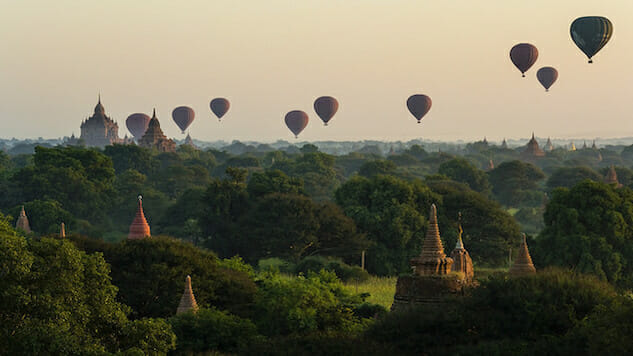Breakout Role: Myanmar

Never thought of visiting Myanmar? Well, you might be soon. In our Breakout Role series, we take a look at places that have seen huge increases in tourism in the last few years, and try to figure out what’s causing all the hype.
During the Southeast Asian tourism boom of the mid-to-late 2000s, Myanmar was mostly left behind. While the nation formerly known as Burma was home to less than 1 million international tourists per year, nearby countries such as Thailand, Vietnam and Malaysia saw massive increases in their annual visitors.
After the Junta military regime—an authoritarian government accused of massive human rights violations dissolved in 2011, the Myanmar began to open itself up to vacationers, who came in hoards to experience the country’s history, architecture and stunning natural beauty.
Today, the Asian nation is beginning to catch up with its tourism-laden neighbors, with the number of annual visitors essentially tripling between 2012 and 2014. In 2016, Myanmar’s incoming tourists grew by 25 percent from the previous year, with the number predicted to top 6 million by the time the data is officially released.
![]()
Lights
 Photo: Marc Veraart, CC-BY
Photo: Marc Veraart, CC-BY
Andrea Ross first came to Southeastern Asia fifteen years ago, back when the region’s tourism markets had yet to explode. Ross, the CEO and co-founder of the Journeys Within Tour Company, has witnessed Myanmar’s rapid growth over the course of the past five years, much of which has been aided by the European Union, the United States and other members of the international community relaxing and suspending sanctions against the former dictatorship.
“Once the political situation changed, and the sanctions were released, then obviously trade and infrastructure came fast,” Ross says.
Ross also says that many foreigners—herself included—had moral reservations about visiting the country while the Junta government was still in power. However, the beginning of free and fair domestic elections, and a famous 2011 visit by then-Secretary of State Hillary Clinton quelled many tourist concerns, and showed that it was both safe and acceptable to visit Myanmar.
From that point on, the nation’s growth was aided by its accessibility. The government still somewhat restricts tourism by requiring visitors to apply for a visa, but entry has become much easier. Additionally, the country’s history as a British colony means that English is its most commonly spoken second language, making getting around major hubs fairly easy for many travelers who don’t speak Burmese.
-

-

-

-

-

-

-

-

-

-

-

-

-

-

-

-

-

-

-

-

-

-

-

-

-

-

-

-

-

-

-

-

-

-

-

-

-

-

-

-

 Photo:
Photo:  Photo:
Photo: 






































